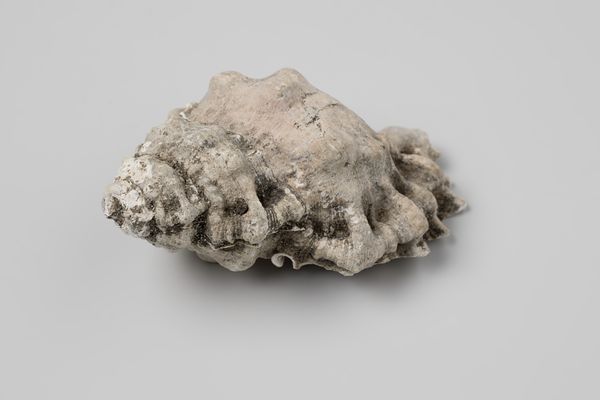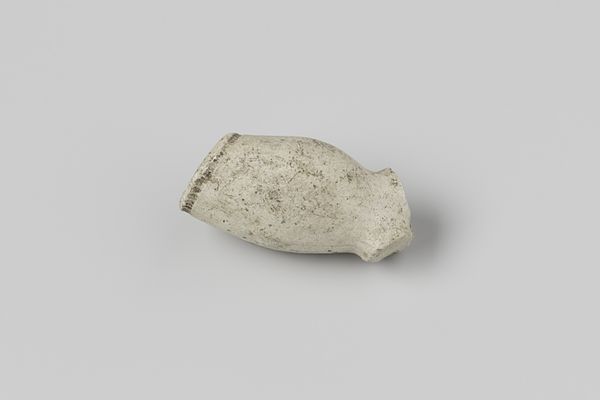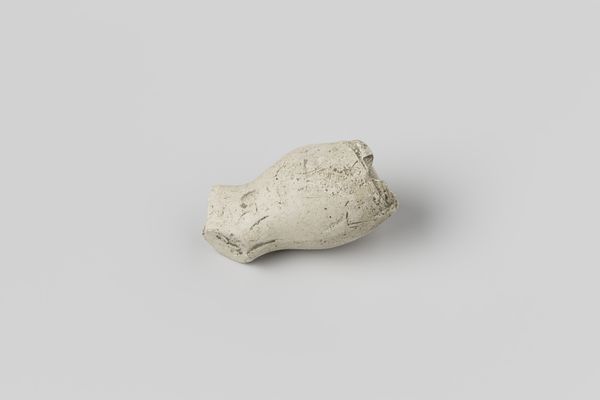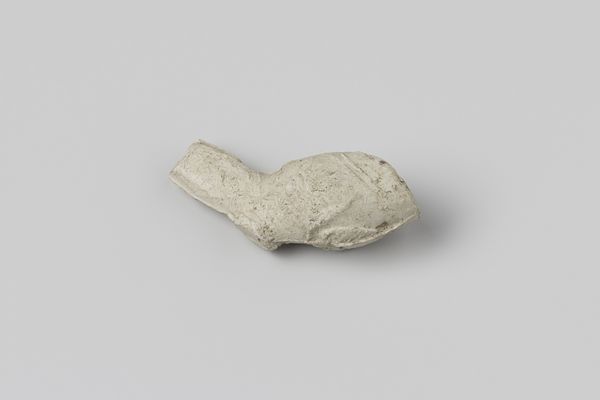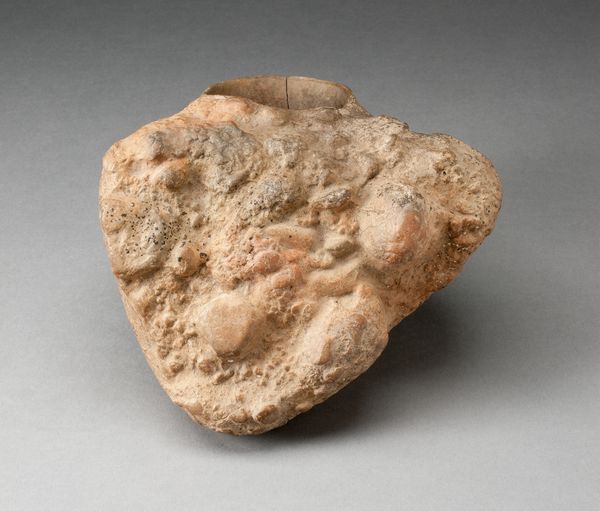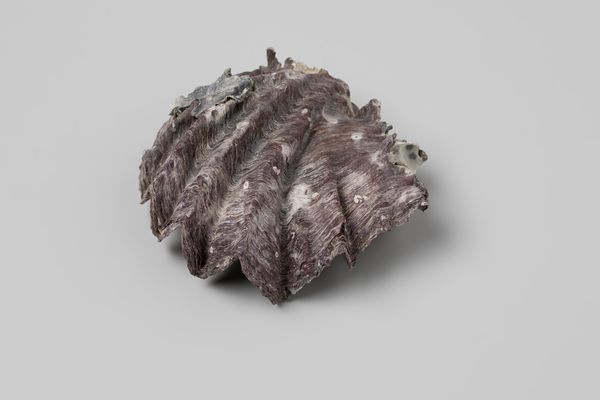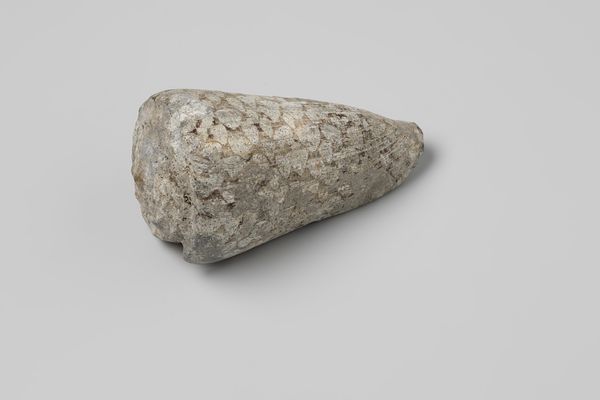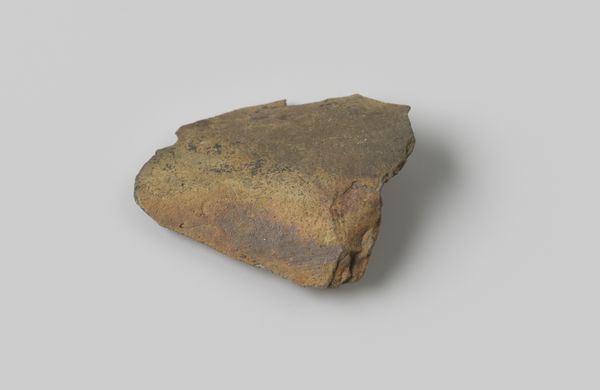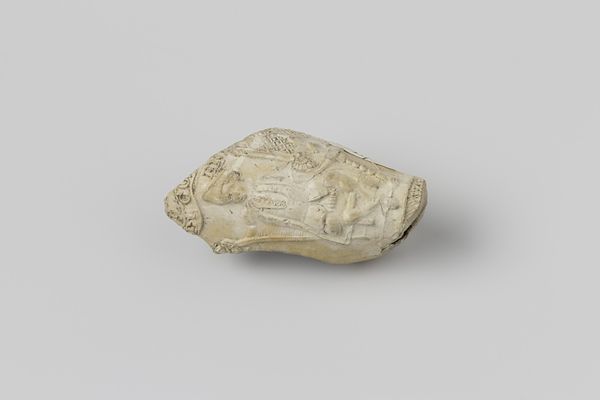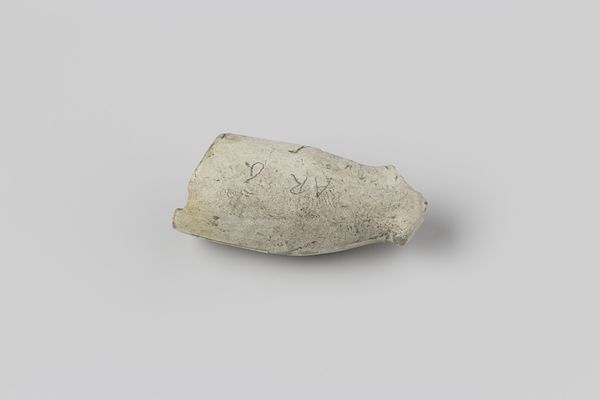
Ostreidae shell from the wreck of the Dutch East India ship Witte Leeuw before 1613
0:00
0:00
ceramic, found-object
#
organic
#
ceramic
#
found-object
#
ceramic
Dimensions: width 7.8 cm, depth 4.2 cm, height 3 cm
Copyright: Rijks Museum: Open Domain
Editor: This object, an Ostreidae shell from the Witte Leeuw, a Dutch East India ship that sunk before 1613, presents a strange, almost alien form. I’m curious, how should we interpret the presence of such a seemingly humble object within the collection of the Rijksmuseum? Curator: Well, let's think about what it represents. It's not simply an isolated, organic form. This shell survived a shipwreck connected to the Dutch East India Company. It immediately forces us to confront the complex legacies of colonialism and global trade. What does it mean to display an object recovered from a ship implicated in such a system? Editor: So, the shell becomes more than just a shell – it's a symbol. Curator: Precisely. It embodies the violence, exploitation, and ecological impact inherent in colonial expansion. Who benefitted, and who bore the cost of its journey? This object invites questions about value: What was considered precious then, and what should be valued now? Think about how contemporary extraction continues similar patterns. Editor: It's powerful to consider its implications for environmental ethics, too – the underwater resting place of the ship is now a place of archaeological value, in contrast with its ecological devastation. Does it tell us anything unique as an individual object removed from its spatial context? Curator: Absolutely. The act of display detaches it from its origin, simultaneously highlighting and obscuring that original context. By isolating it in a museum setting, we bring it to the center of conversations about agency, restitution, and historical accountability. Its damaged condition echoes the disruption and displacement that characterize colonial histories. How might displaying it prompt self-reflection? Editor: This perspective has radically changed how I perceive this shell. It’s no longer a relic, but a charged artifact that promotes dialogue about the ethics of global history and responsibility. Curator: Precisely. Everyday objects, like this shell, challenge the narratives we tell ourselves about the past and compel us to think critically about our present.
Comments
No comments
Be the first to comment and join the conversation on the ultimate creative platform.

